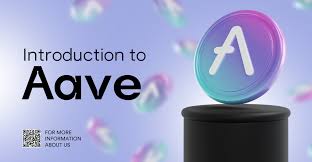AAVE, or African American Vernacular English, is a unique and dynamic form of speech with deep cultural and historical roots. Over the years, aave has moved from being a marginalized dialect to a dominant force in shaping modern-day language, especially in digital culture. This article will explore the origins, evolution, and impact of AAVE on language and society today.
The Origins of AAVE
AAVE’s roots trace back to the period of slavery in the United States. Enslaved Africans were brought to America from various parts of West Africa, and they spoke different languages and dialects. When forced into contact with English speakers, African slaves created a creole language—blending elements of African languages with English—that allowed them to communicate across language barriers. This creole language gradually evolved into AAVE, influenced by the social and cultural context of the African American experience.
The development of AAVE was shaped by historical factors such as segregation, racial discrimination, and the limited opportunities for education in the black community. As a result, AAVE became a marker of group identity, reflecting solidarity within African American communities while also serving as a symbol of resistance to the dominant white culture.
Linguistic Features of AAVE
AAVE is characterized by distinct phonological, syntactic, and lexical features that set it apart from Standard American English (SAE). Some of these include:
- Phonology: AAVE speakers often reduce consonant clusters. For example, “test” might sound like “tes,” and “asked” might be pronounced “ax.”
- Grammar: AAVE has unique grammatical structures, such as the use of “be” for habitual action. For example, “She be going to school” implies that the person regularly goes to school, not that they are going right now.
- Vocabulary: Many words used in AAVE have been adopted into mainstream American English. Terms like “lit,” “flex,” and “tea” (meaning gossip) are now widely used in everyday conversation, especially in the context of online communication.
- Negation: In AAVE, double negatives are often used for emphasis, e.g., “I don’t know nothing about that,” where “nothing” intensifies the negation.
These linguistic features are often viewed through a lens of prejudice, with AAVE sometimes being dismissed as “incorrect” or “improper” English. However, linguists argue that AAVE is a fully developed, rule-governed language system, just as valid and structured as any other dialect of English.
AAVE in Popular Culture
The rise of social media and digital platforms has helped bring AAVE into the mainstream, transforming it from a regional dialect to a global cultural force. Words and phrases originating in AAVE have become staples of internet culture, particularly through memes, viral videos, and influencers. This cultural exchange has blurred the lines between AAVE and mainstream language, as non-Black individuals often adopt elements of the dialect in an attempt to connect with the digital zeitgeist.
Celebrities and influencers, particularly in music, sports, and entertainment, have played a major role in popularizing AAVE. Artists like Beyoncé, Kendrick Lamar, and Drake have made AAVE a staple of their lyrics, while YouTubers and TikTok influencers use it to resonate with young audiences. These figures help ensure the widespread use of AAVE beyond its original cultural context, often without full awareness of its roots or significance.
The Appropriation and Commercialization of AAVE
While AAVE has contributed significantly to the evolution of American culture, its widespread adoption by non-Black individuals raises important questions about cultural appropriation. The use of AAVE in popular media, music, and social media by individuals who do not identify as Black can sometimes lead to the commodification of the dialect. Non-Black individuals may use AAVE without fully understanding its significance or the historical struggles associated with it. This has sparked conversations around respect, authenticity, and the power dynamics involved in cultural exchange.
Critics argue that while AAVE is celebrated when it’s part of a trending meme or catchphrase, its use is often stigmatized when spoken by African Americans in professional or academic settings. The selective appreciation of AAVE highlights the underlying racial inequalities that continue to shape its perception.
AAVE and the Future
As AAVE continues to influence the way people communicate online, there is growing awareness about the need to respect and protect its cultural origins. In education, there has been a push for the acknowledgment of AAVE as a legitimate linguistic system rather than a “broken” or “incorrect” form of English. Programs like the “Language and Social Interaction” course at various universities aim to give students a deeper understanding of the significance of AAVE in its historical and social context.
In the digital world, AAVE’s evolution shows no signs of slowing down. As technology continues to reshape how we interact with language, AAVE’s influence will likely continue to expand. The dialect’s fluidity and adaptability make it a powerful tool for cultural expression in an increasingly connected world.
Conclusion
AAVE is much more than a dialect; it is a living testament to the history, creativity, and resilience of African American communities. Its impact on language, culture, and digital communication is undeniable. As AAVE continues to evolve, it is essential to recognize both its cultural significance and its role in shaping contemporary language. The future of AAVE will be shaped not only by its speakers but by the broader society’s understanding and respect for its origins and contributions.

